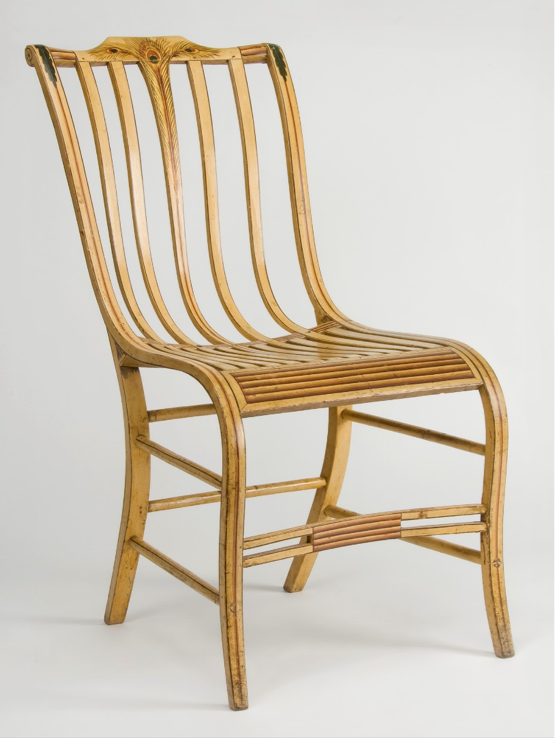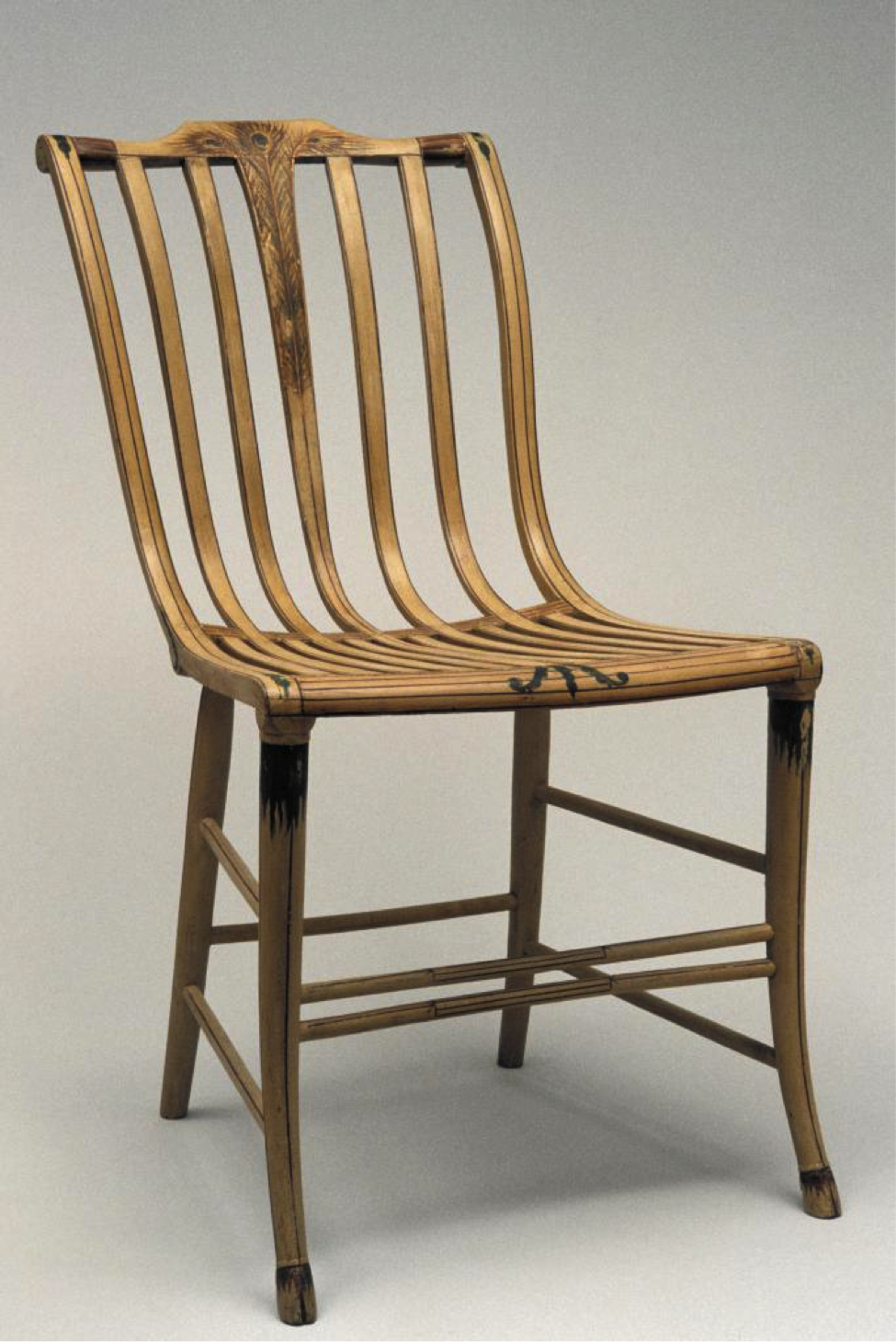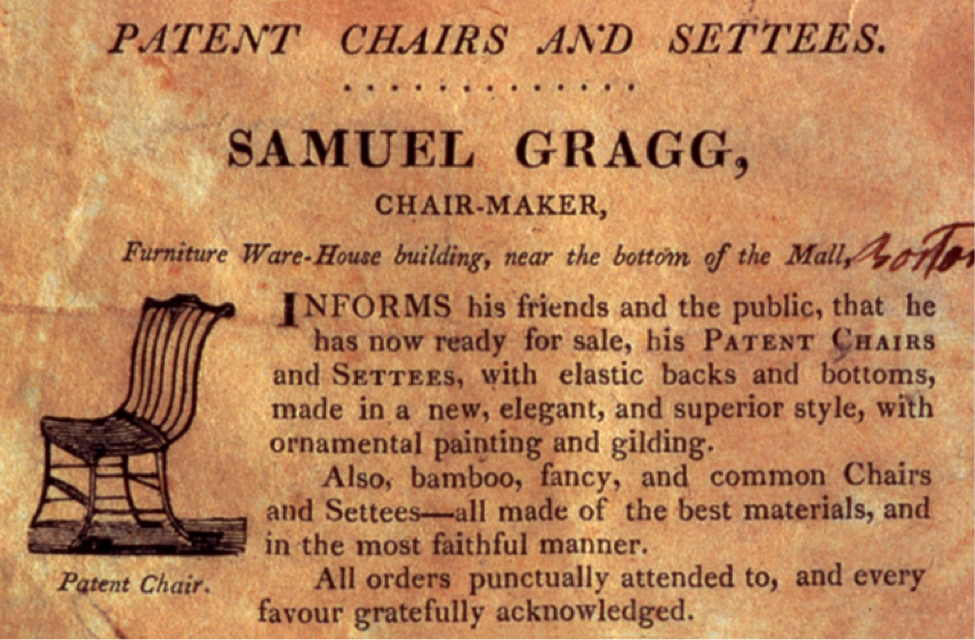Elastic Chair
Today we look at an elastic Chair. The University of Houston presents this series about the machines that make our civilization run, and the people whose ingenuity created them.
Would you want to sit in an elastic chair? I would, but only if it were made in the early 1800's and out of wood, not the rubbery substance known as elastic these days. When Boston furniture maker Samuel Gragg bestowed the word on his 1808 chair design, the definition indicated that the wood could bend with the sitter and then return to its original shape. In other words, he meant this chair to be comfortable, which was still a new concept in furniture design of the time. French designers had emphasized comfort in the 18th century, but they relied on cushioned upholstery to achieve their ends. Gragg took a totally different path with his chair'bending the wood to a body-conforming shape.

Chair, created by Samuel Gragg, Boston, 1808-1812. Photo Credit: Winterthur Museum
Gragg's chairs look striking even today, and they were totally unlike other chairs of his time. In the most daring of his two versions, a single piece of wood on each side curves to form the front leg, seat edge and back. The additional pieces, or slats, that filled in the seat and back followed the same sinuous curve. Gragg may have gotten the idea for the curving back from Greek Revival style chairs that were the newest fashion, but his curves related more to the human body than Greek design. He did not forget about fashion though. His chairs were painted just like other fancy wood chairs of the time. The example in Houston's Bayou Bend Collection in Houston is painted a pale yellow with gold peacock feathers on the back.
But how did he make his wood bend with the sitter without breaking? He used very thin pieces, roughly '' thick, and enough of them to distribute the sitter's weight. And having made the pieces conform to the body's shape during construction meant that the actual give required was relatively slight. The initial shaping of the wood required heat and steam to make the wood pliable. It could then be held or clamped against specially shaped forms. But the process was tricky since the pieces were so thin.

Chair, created by Samuel Gragg, Boston, ca. 1808-1820. Photo Credit: Bayou Bend Collection, Museum of Fine Arts, Houston.
Gragg went to the trouble to patent his design in 1808. Either that scared away competition, or other chair makers lacked the skill to bend the wood in such dramatic curves, but no one else appears to have imitated Gragg's design. At least three decades would pass before German-born designer Michael Thonet would find success making the bentwood chairs that eventually became standard seating in European and American cafes.
Unfortunately, very few of Gragg's elastic chairs have survived to our time. They may have been too comfortable and used too much, or perhaps the pieces of wood were a trifle too slender for long life. But a few have been preserved in museums, and two furniture conservators have each managed to replicate Gragg chairs. Perhaps one day I can sit in an elastic chair.

Trade card of Samuel Gragg, ca. 1808. Carrier Library, James Madison University. Photo Credit: Chipstone
I'm Margaret Culbertson from the Bayou Bend Collection, where we too are interested in the way inventive minds work.
(Theme music)
Kane, Patricia E. 'Samuel Gragg: His Bentwood Fancy Chairs.' Yale University Art Gallery Bulletin, Vol. 33, No. 2, Studies in American Art (Autumn, 1971, pp. 26-37.
Edwards, Clive. 'Bending' and 'Bentwood.' Encyclopedia of Furniture Materials, Trades and Techniques. Brookfield, VT: Ashgate Pub., 2000.
Albertson, Karla Klein. 'The Incredible Elastic Chairs of Samuel Gragg.' Antiques and the Arts Weekly, (April 4, 2003), pp. 1, 40-41.
Williams, Donald C. 'Replicating Gragg.' American Period Furniture, vol. 11 (December 2011), 46-55.
Podmaniczky, Mike. 'The Incredible Elastic Chairs of Samuel Gragg.' Magazine Antiques, vol. 163, no. 5 (May 2003), pp. 138-145.
Podmaniczky, Mike. 'The Elastic Chairs of Samuel Gragg.' Antiques & Fine Art Magazine. http://www.antiquesandfineart.com/articles/article.cfm?request=465
This episode was first aired on May 20, 2015